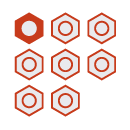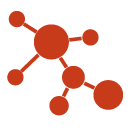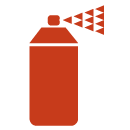Additive manufacturing occupies a unique place in the development of current products. It makes possible to manufacture complex parts without heavy investments.
SLM technology uses titanium powder materials. A computer-programmed laser goes to the desired areas to melt the particles on the powder bed while increasing its temperature past the glass transition point.
It is an ideal process for very complex parts with recesses.
SLM process
- The metal powder container must be full. The supports must be intelligently positioned to avoid cracks, collapses or deformations at the end of production.
- A laser is projected onto an oscillating mirror which follows the path determined by the computer.
- It heats particles until they merge. Unmerged powder surrounds the parts and will be subject to controlled recycling.
- The powder container goes up at a rate of 30 µm and the manufacturing container goes down by as much. The scraper brings the powder from left to right to the manufacturing container.
- The laser traces by merging the next layer.
- These steps are repeated until the part total impression.
- After printing, the non-fused powder is removed, the plate is removed and the supports are separated from it by cutting them.
- Then, a finishing work is necessary and a fine sandblasting to harmonize the surface finish which ends at an Ra of 6.2µm if no polishing is required
Technical specifications
 |
Hardness & Resistance Very resistant parts, high mechanical properties |
 |
Accuracy Iso 2768 fk Layer 30 ou 60 µm |
 |
Quantity 1-X piece(s) |
 |
Material Titane Ti6Al4V (ELI Grade 23) |
 |
Aspect & finishing Ra 6,2µm Miror Specific textures are possible |
 |
Geometry Great geometric freedom Complex parts with recesses Specific textures are possible |





